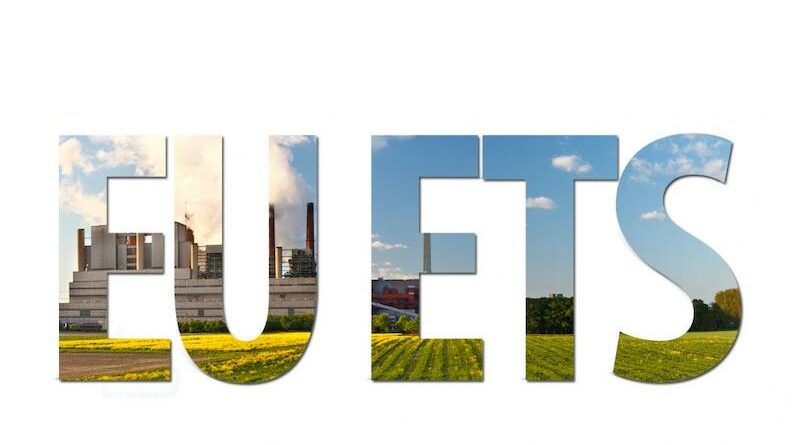
Creating opportunities for European industry and citizens to thrive through the new global cleantech transformation: the role of the EU ETS
The 2020s have been off to an incredibly tumultuous start for the European Union and its citizens, with events affecting our overall security landscape, the predictability of our supply-chains and casting more than just a shadow over the idea that a stable and predictable future was guaranteed for European citizens. As risk analysis moved from the sidelines of an optional measurement to center stage decision-making, including through every day risk management, policies aimed at navigating risk, such as the EU ETS, have proven to be able to deliver more than previously expected while others turned out to be superfluous. Further stabilizing policies aimed at de-risking adaptation to the challenges of the 21st century while fostering competitiveness globally in the new cleantech era will need to form the core of the future European Commission’s mandate from 2024-2029.
Brexit, the COVID19 pandemic, the return of war on the European continent and last but not least, yearly deadly weather related events (floods, wild fires, etc.) could have made Europe seem like a difficult place to invest in. And yet, we see that when it comes to the net-zero transformation, cleantech investment in Europe did not suffer the same headwinds, reflecting confidence in the resilience of the EU’s commitment to this goal and overall economic stability¹. The key reason behind this was that in the midst of overlapping existential crises, the EU’s own Emissions Trading System re-emerged as the key economic instrument to advance technological transformation and provide climate mitigation, evolving into a high-value long-term asset market attracting to it many actors who had long left it and providing generous revenues to the Member States of the EU.
As a consequence of this, the EU Green Deal upheld political pressures against it, which had begun as early as March 2020. The economic argument for the net-zero transformation as the only remaining certainty over our future was starting to be made in Europe.
To best navigate the massive transformations bound to dominate the rest of the 2020s, it will be important to introduce necessary safety-nets in our European policies, whether that refers to carbon pricing, securing supply-chains, economic measures or market signaling policies ought to take center stage. This requires investing more to de-risk European indigenous cleantech on their scaling up journey. We know that the higher the carbon price is, the more new technology is needed to reduce emissions; the more we need this technology the more affordable it has to be and the more we deploy cleantech, the more then the carbon price drops eventually, over some years – but this journey has too many unpredictabilities in the short to medium terms and bears in itself high risk. Without a carbon floor price, it remains impossible for Member States to know exactly what level of revenues they can expect from the ETS back up to 2030, let alone to borrow money against the future revenues. Same for the EU, borrowing against future revenues from carbon pricing instruments (CBAM included) will be needed, should the EU wish to invest in a newly developing technological landscape on a scale comparable to other global players aiming to secure competitiveness in the cleantech race.
A carbon price floor will be needed for stability of revenues for ETS governments, and to accelerate and fund the technological transformation of the EU industrial landscape.
With the help of a carbon floor price, two separate pools of ETS revenues can be created. On one hand, there is a secure pool of revenues that MS can count on up to 2030 which allows them in turn to make investment decisions across the economy to fund the climate transition (revenues guaranteed by the existence of a floor); a second pool of revenues is then created from the revenues collected when the price is above the floor price – this stream could be placed in a fund dedicated to de-risking investments for new technology in the EU and for creating opportunities for European industry to thrive in the global cleantech competition.
The discussion of a carbon floor price invites the question of where the floor should be set, in such a way that it is at a level which maximises the benefits of increased stability while retaining benefits from market price discovery. Based merely on developments of the 2020-2024 period, we could envision a 80-100 Euros/tCO2eq. The floor could be designed as an escalating price with periodic inflation indexation. The Carbon Border Adjustment Mechanism would also benefit from this policy as it would also become a more predictable policy for those around the world and give a more predictable signal for the partners around the world.
The EU ETS started as a signal to businesses, mostly envisioned to drive fuel-switch, but it is now a signal to policy-makers and to investors. As we advance closer and closer to the more difficult emissions reductions, it is clear that complementary policies, such as those that seek to grow indigenous production of net-zero technologies as well as pursue grid expansion will become vital –
yet, these policies have to be built around a pillar of stability around guaranteed economic revenues and taking into account the particular needs of the future technologies that will dominate the net-zero economy.
Stability throughout deep transformation will be needed and the ETS can provide this, provided it acquires a carbon floor price to guarantee future revenues, a policy innovation useful for governments and EU institutions, easily understandable for global investors, much needed by European citizens, and last but certainly not least, useful for climate mitigation and for those enabling the net-zero transition, the cleantech innovators.
¹ https://www.cleantechforeurope.com/publications/cleantech-q2-briefing-2023




